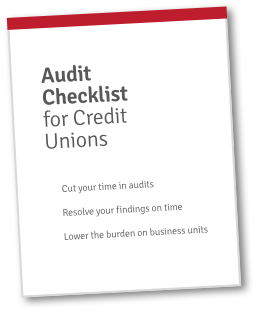Early in the pandemic, unemployment rates were high. Unemployment insurance fraud spiked. At the same time, the landscape of automatic deposits was changing.
Today, unemployment is lower and automatic deposits have stabilized somewhat. Yet banking today is challenged by increased cybersecurity needs, higher reliance on digital and remote banking, and new sources of fraud.
Read on to see guidance on returning fraudulent ACH deposits (originally provided by NACHA in 2020).
Download our Unresolved Findings Eliminator here.
A member already withdrew a portion of their fraudulent ACH deposit. Can the remaining partial amount be returned?
No. Fraudulent ACH deposits must be returned in full. Operating rules say that the dollar amount of return funds must match exactly.
If you have captured partial amounts, you will need to work with the state(s) to determine how they would like the funds returned. The ACH could be used, but your credit union would be the ODFI and could create a CCD or CTX entry to send the funds back to the state.
However, they may ask you to cut a direct check instead. But there is a caveat…
Is the RDFI credit union liable when a members withdraws fraudulent unemployment funds?
If partial unemployment insurance funds have been withdrawn, the receiving depository financial institution (RDFI) is not liable.
According to the NACHA, the originating depository financial institution (ODFI) warrants that the deposited funds are correct and authorized.
If you capture only part of the original deposit, get in touch with the issuing state. They may either:
- Instruct you to return the funds with a check, or
- Allow a return ACH deposit. You would need to create a separate credit. In this case your credit union would be considered the ODFI.
Which Return Reason Codes should we use for suspected fraudulent unemployment insurance deposits?
Not all Return Reason Codes fit situations exactly. NACHA says to use the return code closest to the actual return reason in such cases.
A few NACHA-suggested codes include:
- Return Reason Code R03: No Account/Unable to Locate Account
- Return Reason Code R17: File Record Edit Criteria/Entry with Invalid Account Number Initiated Under Questionable Circumstances. If you decide to use this code, regulations state that the term “questionable” be in the first 12 positions of the Addenda Record.
- Return Reason Code R23: Credit Entry Refused by Receiver
The Takeaways
With rising interest rates, market uncertainty, and geopolitical conflict, we see continued risk ahead. An increase in unemployment means an increase in unemployment fraud schemes.
The answers in this blog may serve to guide your credit union in an uncertain future.
If you’re new to Redboard, we recommend reading the following three blogs about improving your examination and audit efficiency:
We also recommend downloading our free Unresolved Findings Eliminator and Credit Union Audit Checklist to streamline your audit process.






